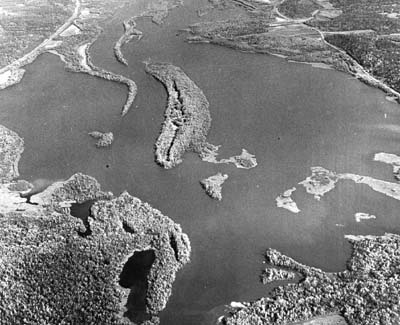
Illinois Natural History Survey
River Landforms
Rivers continually change. They also continually change the landscape. They cut down and fill their channels, change course, deposit and remove sediments, and form flat plains called floodplains. During floods, rivers move vast quantities of material and cover the land with water. Rivers and their tributaries create and modify several different kinds of landforms.
Tributary Streams
Streams form when water running on the land collects in channels and flows
downhill. A tributary stream is one that flows into another stream or river.
Similar to rivers, they change through time and alter the surrounding land.
Fan
Tributary streams deposit wedge-like fans of sediment when they enter the
valley of a larger river. As they enter the lower-lying valley, their current
slows down and sediments are laid down in fan-shaped deposits.
Fans also form when sediments move down hills that line the edge of a river
valley.
Natural Levee
A natural levee is formed when a river overflows its banks, slows down and
deposits sediments. The heaviest material, typically sand, drops out along
the bank. Over time, these deposits form a ridge along the bank. The ridge
is called a natural levee.